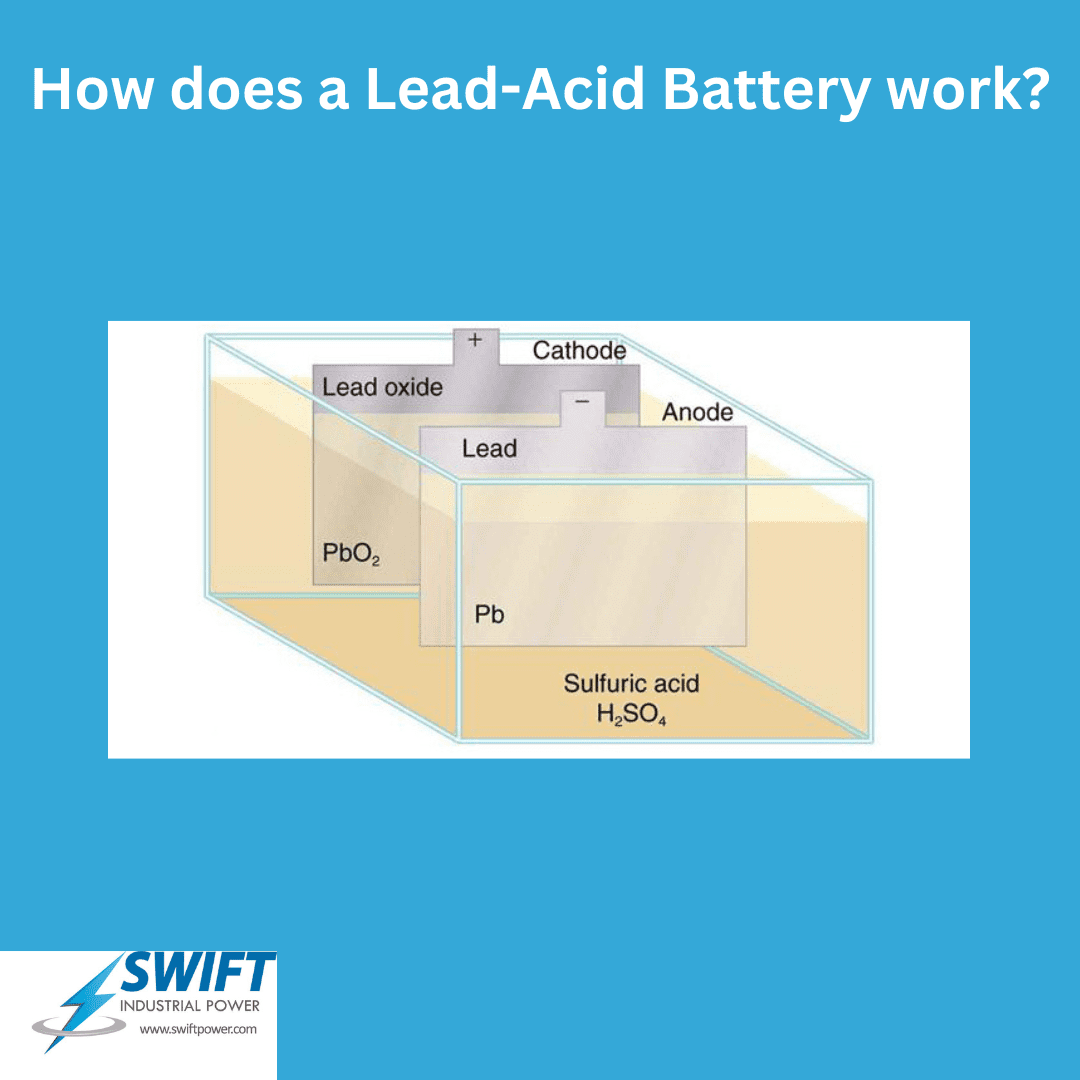How Does a Lead-Acid Battery Work?
The lead-acid battery, a reliable workhorse you’ll find in everything from forklifts to datacenters, has been around for over 150 years. While newer battery technologies exist, lead-acid batteries are still widely used due to their affordability and ability to deliver stored energy.
Inside the Battery: A Chemical Reaction Powerhouse
Let’s break down what goes on inside a lead-acid battery, though some terms might need further explanation:
- Electrolyte: This is the sulfuric acid solution that allows electricity to flow between the battery’s components.
- Sulfate, Hydrogen, Ions: These are electrically charged particles that participate in the chemical reaction that generates electricity.
- Plates: The battery has lead plates, both positive and negative, that undergo a chemical change during discharge and recharge.
Here’s the simplified version:
- Charged Up: When you charge the battery, a chemical reaction occurs. The lead plates transform into lead dioxide (positive plate) and lead sulfate (negative plate).
- Discharging: Now, when you use the battery, the lead dioxide and lead sulfate react again, forming lead sulfate and water. This reaction creates an electric current that powers your device.
- Plate Size Matters: The more surface area the lead plates have, the more energy the battery can store and deliver.
- Recharge and Repeat: To keep the party going, you need to recharge the battery periodically. This reverses the chemical reaction and brings the lead plates back to their original state.
Lead-Acid Batteries: Powerful But Needing TLC
While lead-acid batteries are dependable and cost-effective, they do have limitations:
- Limited Lifespan: They don’t last forever and degrade over time.
- Overcharging/Deep Discharge Woes: Overcharging or letting the battery completely drain can damage it.
Despite these drawbacks, lead-acid batteries remain a popular choice for applications requiring high energy density at a lower cost. You’ll find them in cars, forklifts, boats, backup power systems, and even some solar energy storage solutions.
In future posts, we can delve deeper into specific lead-acid battery types and how to maximize their lifespan!

